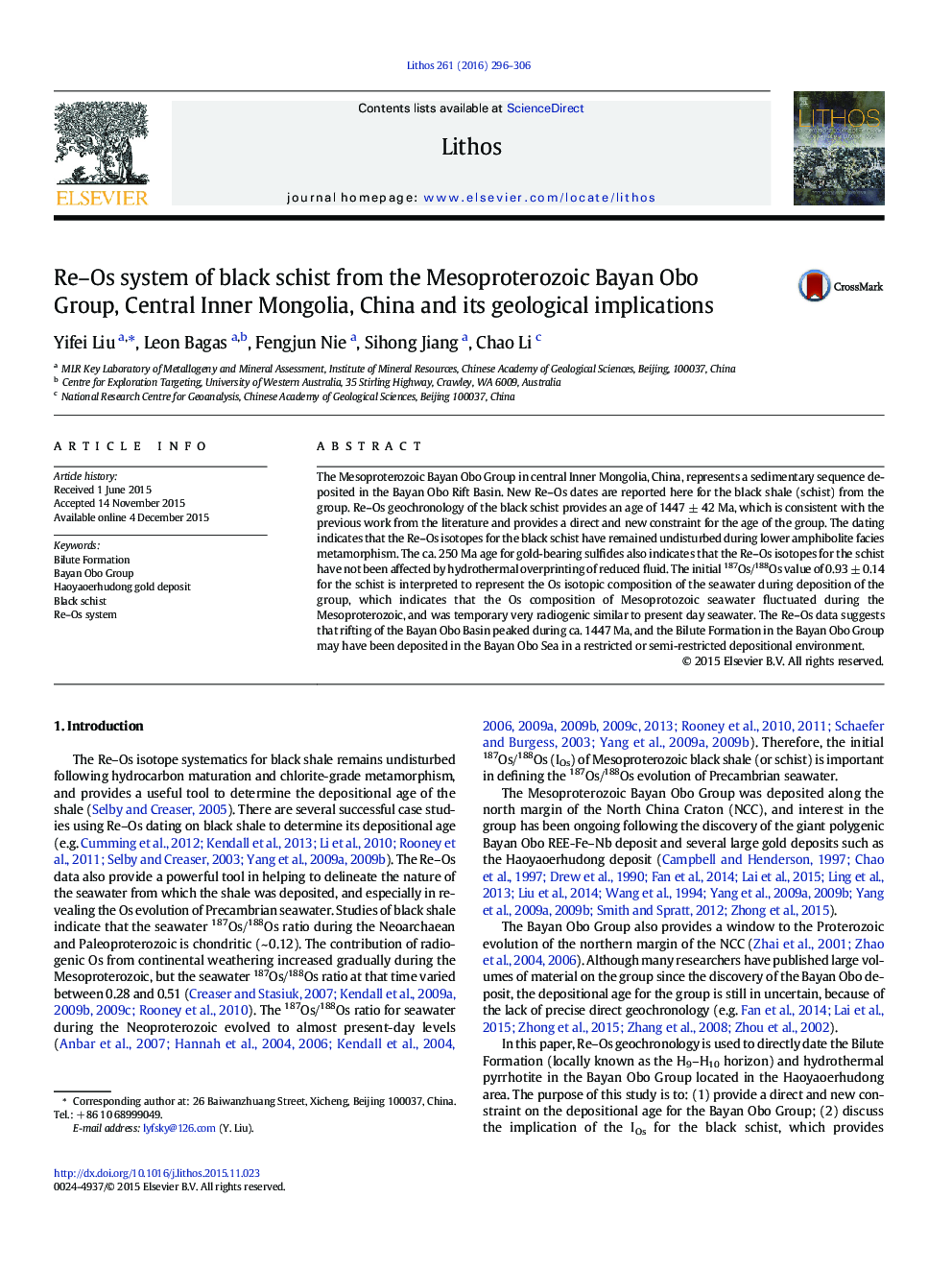| Article ID | Journal | Published Year | Pages | File Type |
|---|---|---|---|---|
| 4715561 | Lithos | 2016 | 11 Pages |
•The Re–Os black schist system indicate the H9 unit of the Bayan Obo Group was deposited at 1447 ± 42 Ma (MSWD = 1.8).•The black schist Re-Os isotopes have remained undisturbed during lower amphibolite facies metamorphism.The black schist Re-Os isotopes have not been affected by the reduced overprinting hydrothermal mineralization event.•The Ios (0.93 ± 0.14) indicates the Mesoprotozoic seawater Os is heterogeneous and temporary very radiogenic.
The Mesoproterozoic Bayan Obo Group in central Inner Mongolia, China, represents a sedimentary sequence deposited in the Bayan Obo Rift Basin. New Re–Os dates are reported here for the black shale (schist) from the group. Re–Os geochronology of the black schist provides an age of 1447 ± 42 Ma, which is consistent with the previous work from the literature and provides a direct and new constraint for the age of the group. The dating indicates that the Re–Os isotopes for the black schist have remained undisturbed during lower amphibolite facies metamorphism. The ca. 250 Ma age for gold-bearing sulfides also indicates that the Re–Os isotopes for the schist have not been affected by hydrothermal overprinting of reduced fluid. The initial 187Os/188Os value of 0.93 ± 0.14 for the schist is interpreted to represent the Os isotopic composition of the seawater during deposition of the group, which indicates that the Os composition of Mesoprotozoic seawater fluctuated during the Mesoproterozoic, and was temporary very radiogenic similar to present day seawater. The Re–Os data suggests that rifting of the Bayan Obo Basin peaked during ca. 1447 Ma, and the Bilute Formation in the Bayan Obo Group may have been deposited in the Bayan Obo Sea in a restricted or semi-restricted depositional environment.
